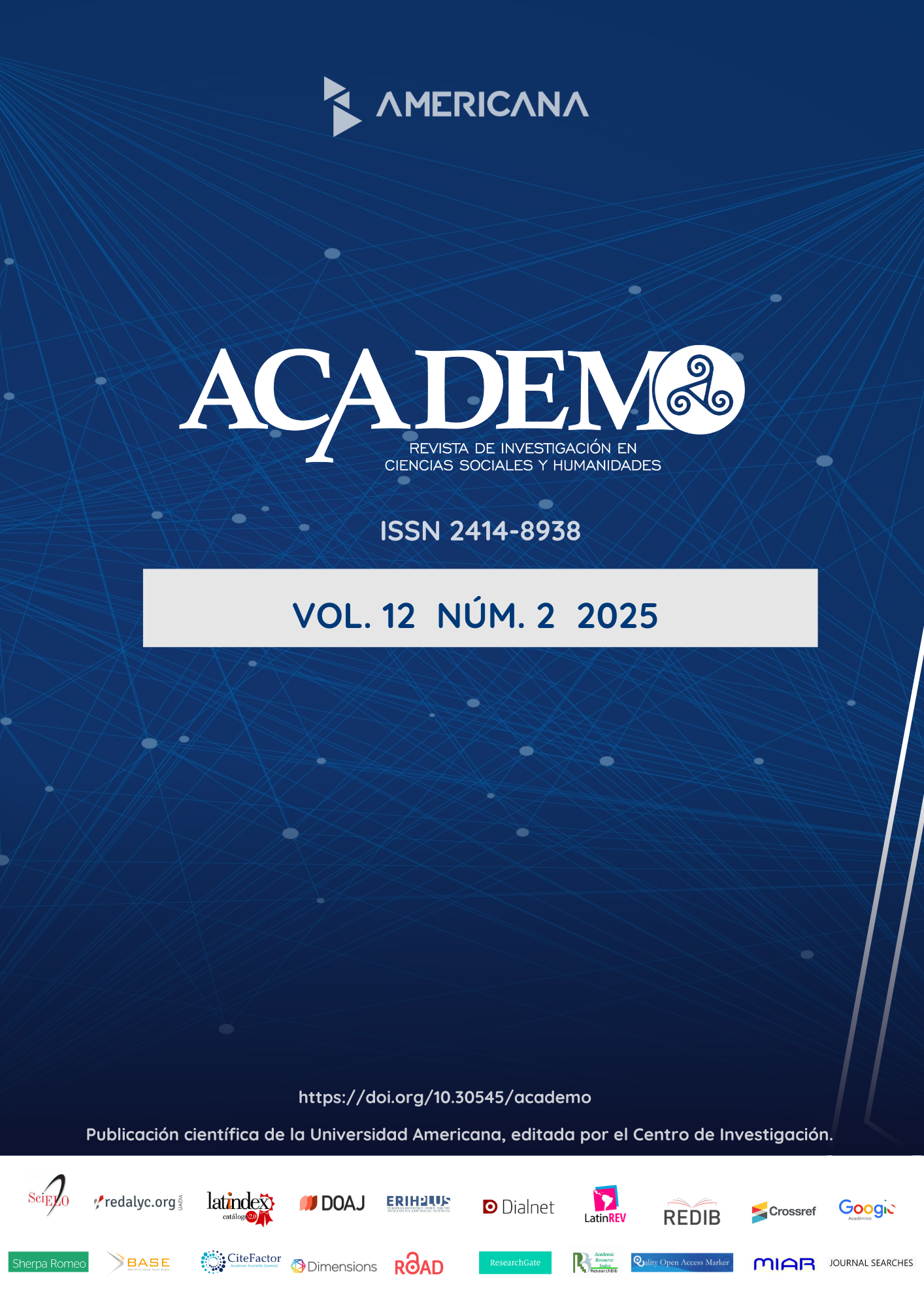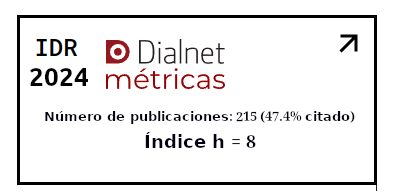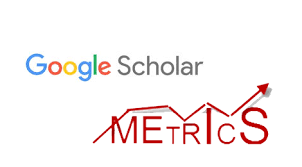Future housing representations of children from rural areas
DOI:
https://doi.org/10.30545/academo.2025.n2.1132Keywords:
Childhood, Drawing, Housing, Visualization, Rural areasAbstract
Based on experiences, during childhood people develop cognitive, affective and motor abilities, to comprehend different circumstances, to generate beliefs and to glimpse the future. An outstanding situation is housing and its environment, whether rural or urban. The representation of this can be expressed through drawing which allows revealing the construction of oneself, its reality, its significance and motivations. The purpose was to investigate, through pictorial representation, the way in which children from rural areas depict the place where they want to live as adults, which elements integrate it and how they are organized. The method was mixed. 145 children, aged from 6 to 13 years old, from seven rural schools in Guanajuato, México, were asked to draw their future house. Content analysis and statistical analysis of the drawings were carried out. The results showed children’s consciousness about space, the environmental conditions, and the desire to improve these conditions. This points out a construction generated among the participants about their development and their real and imagined context, which became apparent in differences and similarities of the illustrations, as well as in their vision of certainties, uncertainties and hope for future well-being.
Downloads
References
Barañano, M. (2021). Los hogares como espacios de arraigo y sus transformaciones en un contexto global. Encrucijadas. Revista Crítica de Ciencias Sociales, 21(1), r2101.
Baroutsis, A., Kervin, L., Woods, A., & Comber, B. (2019). Understanding children’s perspectives of classroom writing practices through drawings. Contemporary Issues in Early Childhood, 20(2), 177-193. https://doi.org/10. 1177/1463949117741743
Berger, P., & Luckman T. (2003). La construcción social de la realidad. Amorrortu.
Bronfenbrenner, U., & Morris, P. A. (2006). The bioecological model of human development. In R. M. Lerner, & W. Damon (Eds.), Handbook of child psychology. Theoretical models of human development. (5 ed., Vol 1., pp. 793-828). John Wiley & Sons.
Cepeda, K., Pazmiño, L., & Estrella, P. (2020). Desarrollo creativo por medio de las artes visuales en niños De educación inicial ecuatoriana, Universciencia, 18(54), 37-44. http://revista.soyuo.mx/index.php/uc/article/view/137/222
CONAPO. (2020). Grado de marginación por localidad en el Estado de Guanajuato. Gobierno del Estado de Guanajuato. https://portalsocial.guanajuato.mx/documento/grado-de-marginacion-por-localidad-2020-del-estado-de-guanajuato.
CONEVAL. (2020). Informe de la pobreza y evaluación 2020 de las entidades federativas. https://www.coneval.org.mx.
Deci, E., & Ryan, R. (1990). Intrinsic Motivation and Self-Determination in human behavior. Plenum.
Delval, J. (1989). La representación infantil del mundo social. In E. Turiel, I. Enesco, & J. Linaza (Eds.) El mundo social en la mente infantil (pp.245-328). Alianza.
Delval, J. (2007). Aspectos de la construcción del conocimiento sobre la sociedad. Educar, Curitiba, 30, 45-64.
Dosio, A. (2020). La enseñanza del dibujo y la formación para el trabajo en los inicios del sistema educativo nacional argentino. Arte, Individuo y Sociedad, 32(2), 485–502. https://doi.org/10.5209/aris.64988.
Edwards, A. (1959). Edwards personal preference schedule. New York: The Psychological Corporation.
Erikson, E. H. (1994). Identity and the Life Cycle. W. W. Norton & Company.
Fabbrocino, M. (2020). El arte visual como herra mienta de investigación para analizar la imagi nación de los niños. Tercio Creciente, 155-173. https://doi.org/10.17561/rtc.extra2.5790.
Figueroa, M. E. (2018). El futuro como dispositivo: la mirada de algunos estudiantes universitarios. Revista Política y Cultura, 50, 179-203.
Figueroa, M. E. (2019). ¿Se puede tener un futuro? Imaginarios del porvenir en contextos de precariedad y violencia. Imagonautas. Revista Interdisciplinaria sobre Imaginarios Sociales, 13, 23-41.
Glas, A. (2015). Anthropogene Voraussetzungen –die Genese der Kinder– und Jugendzeichnung. In A. Glas, U. Heinen, J. Krautz, M. Miller, & H. Sowa & B. Uhlig (Hrsg.). Kunstunterricht vestehen. Schritte zu einer systematischen Theorie und Didaktik der Kunstjpädagogik (pp. 199-220). Imago.
Guevara-Sanginés, M. L. (2004). Psicología de la voluntad: Del deseo a la acción. II Reunión de Investigadores Nacionales en Psicología. Ponencia. Tequisquiapan, Qro.
INEGI. (2020). Censo de Población y Vivienda 2020. Principales resultados por localidad. INEGI.
Kleinginna, P., & Kleinginna, A. (1981). A categorized list of motivation definitions, with suggestions for a consensual definition. Motivation and Emotion, 5(3), 263-291. https://doi.org/10.1007/BF00993889
Krautz, J. (Hrsg.) (2017). Beziehungsweisen und Bezogenheiten. Relationalität in Pädagogik, Kunst und Kunstpädagogik. Imago.
Lowenfeld, V. (1961). El niño y su arte. Editorial Kapelusz.
Lugo-Villegas, I., Rodríguez-Arteaga, M. A., & Camacho-Villegas, N. (2020). El contexto geográfico y su influencia en la vida sociocultural del hombre andino. Revista Identidad, 6(1), 15–22. https://doi.org/ 10.46276/rifce.v6i1.861
Maslow, A. (1970). Motivation and personality (2 ed.). Harper & Row.
Monteira, S., Jiménez-Aleixandre, M. P., & Siry, C. (2020). Scaffolding Children’s Production of Representations Along the Three Years of ECE: A longitudinal study. Research in Science Education, 52(2). https://doi.org/ 10.1007/s11165-020-09931-z.
Murray, H. (1938). Explorations in personality. Oxford University Press.
Piaget, J., & Inhelder, B. (1984). Psicología del niño (12. ed.). Morata
Ponterotto, J. G., & Park-Taylor, J. (2019). Careerography: Introducing a new tool for research, theory development, practice, and training in career psychology. Journal of Career Development, 48(1), 3-6. https://doi.org/10.1177/0894845319867429
Quiroga, M. (2021). Identidad personal en niños y adolescentes: estudio cualitativo. Revista Latinoamericana de Ciencias Sociales, Niñez y Juventud, 19(2), 320-344. https://doi.org/10.11600/rlcsnj.19.2.4448.
Rinaldi, H., Okawa, G., Boccato, C. & de Castro, L. (2019). Indicadores emocionais de Koppitz no desenho da figura humana: comparação entre uma amostra clínica e escolares. Avances en Psicología Latinoamericana, 37(2), 195. https://doi.org/10.12804/revis tas.urosario.edu.co/apl/a.5118.
Rodríguez, A., Velasco, N., & Jiménez, C. (2014). La educación artística: una práctica pedagógica en la formación de sujetos diversos. Plumilla Educativa, 14(2), 85-107. https://doi.org/ 10.30554/plumillaedu.14.755.2014.
Rogers, C. (1982). Libertad y creatividad en la educación. Paidós.
Seve, L. (1973). Teoría marxista de la personalidad. Amorrourto.
Sociedad Mexicana de Psicología. (1984). Código de Ética del Psicólogo. Trillas.
Tomasello, M. (2012). Warum wir kooperieren. Aufl. Suhrkamp Verlag.
Vargas, G. (2012). Espacio y territorio en el análisis geográfico. Revista Reflexiones, 91(1), 313-326.
Zapata, M. (2019). Tras las huellas del arte infantil. Revista de la Escuela de Ciencias de la Educación, 5, (2), 71-80. http://www.scie lo.org.ar/pdf/rece/v2n14/v2n14a08.pdf.








